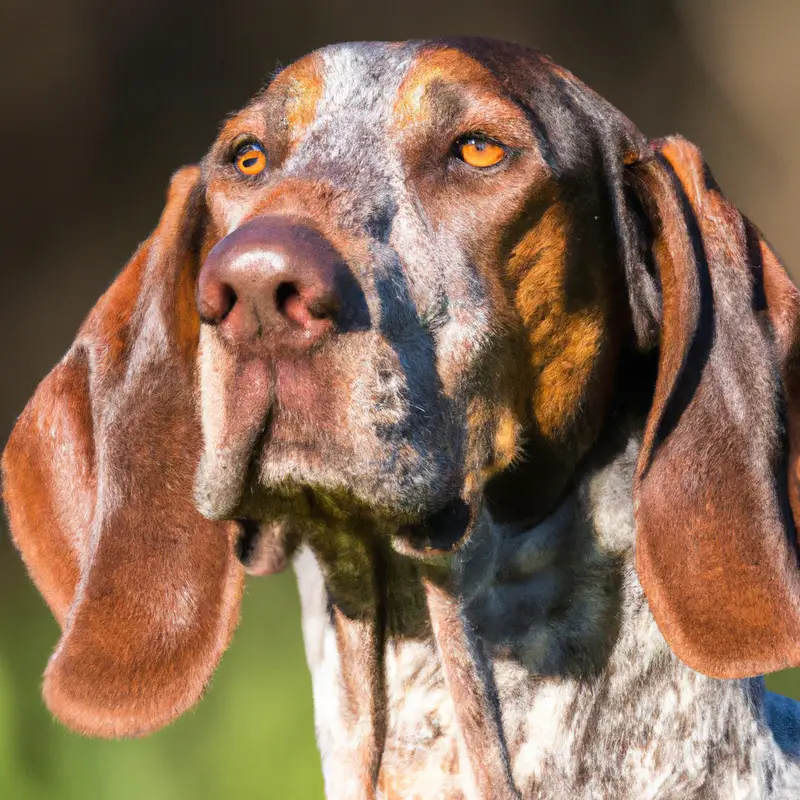What Are The Main Differences Between English Foxhounds And Other Hound Breeds?
Key Takeaways:
- English Foxhounds are known for their exceptional endurance and stamina.
- Unlike other hound breeds, English Foxhounds have a distinctive baying vocalization.
- English Foxhounds are generally more sociable and friendly towards people compared to other hound breeds.
- English Foxhounds have a strong hunting instinct and are typically used for fox hunting.
Are you a fan of hound breeds? If so, you’re in for a treat! In this article, we’ll delve into the fascinating world of English Foxhounds and explore the key ways they differ from other hound breeds.
From their distinctive physical characteristics to their unique hunting styles, we’ll cover it all.
As an experienced dog enthusiast, I’ll guide you through the temperament, training, grooming, and health concerns of English Foxhounds, comparing them to their hound counterparts. So, if you’ve ever wondered what sets these majestic dogs apart, get ready to be amazed! Let’s dive right in.
Physical Characteristics
Description of English Foxhounds
English Foxhounds are medium to large-sized dogs known for their athletic build and striking appearance.
They have a well-defined muscular body, with a deep chest and a straight back.
Their ears are long and pendulous, and their eyes are large and expressive.
Typically, English Foxhounds have a short, dense coat that can come in various colors, including tricolor (black, white, and tan) and bicolor (white with another color).
They have a friendly and gentle temperament, making them great companions and excellent family pets.
Additionally, these hounds are renowned for their incredible sense of smell and exceptional stamina, making them well-suited for hunting and tracking purposes.

Comparison with other hound breeds
English Foxhounds can be distinguished from other hound breeds by their distinct physical characteristics.
They typically have a more athletic build, with longer legs and a leaner body.
In terms of temperament, English Foxhounds are known for being friendly, energetic, and enthusiastic.
Compared to other hound breeds, they are considered to be excellent scent hounds with a strong prey drive.
Their exceptional endurance and ability to work in a pack make them well-suited for fox hunting.

Temperament and Behavior
Typical temperament of English Foxhounds
English Foxhounds are known for their friendly and sociable temperament.
They are generally good-natured, patient, and get along well with both humans and other dogs.
They have a natural eagerness to please their owners and are known for their loyalty and intelligence.
English Foxhounds have a high energy level and require regular exercise to keep them happy and healthy.
They are also known for their strong hunting instincts and may have a tendency to wander if not properly trained and supervised.
Overall, English Foxhounds make wonderful companions for active individuals or families who can provide them with plenty of exercise and mental stimulation.

Contrasting behavior traits of other hound breeds
Hound breeds come in various shapes and sizes, each with their own unique behavior traits.
Here are some contrasting characteristics you may find among different hound breeds:
- Barking: Beagles and Bloodhounds are known for their vocal nature and tend to bark more frequently compared to other hound breeds.
- Independence: Afghan Hounds and Basenjis have a more independent nature and may not always be as eager to please their owners compared to breeds like Basset Hounds or Coonhounds.
- Energy Levels: While most hound breeds are active and have high energy levels, Greyhounds are known for their sprinting abilities but can also be quite lazy and enjoy lounging around.
- Adaptability: Some hounds, like the Pharaoh Hound or Dachshund, may adapt well to apartment living, while others, such as the Foxhound or Coonhound, may require more space and exercise.
- Prey Drive: Hound breeds, in general, have a strong prey drive, but breeds like the Saluki or Whippet may have a higher tendency to chase after smaller animals.
Remember, individual dogs will always have their own personalities and behaviors that may not align exactly with breed stereotypes.
It’s crucial to consider their specific traits and needs when choosing the right hound breed for you.
Purpose and Hunting Style
Function of English Foxhounds in hunting
English Foxhounds play a crucial role in hunting. They are known for their exceptional scenting ability, stamina, and endurance.
These hounds are used in packs to chase and track foxes for miles.
Their primary function is to pursue the scent of the fox, keeping it at bay until the hunters can arrive. With their strong determination and strong sense of smell, English Foxhounds are well-suited for this specific task.
Different hunting styles of other hound breeds
Other hound breeds, such as Beagles, Basset Hounds, and Bloodhounds, have their unique hunting styles.
Beagles are known for their keen sense of smell and are often used for hunting small game like rabbits.
Basset Hounds are skilled at tracking scents on the ground and are typically used for hunting larger game, like deer.
Bloodhounds excel at tracking scents over long distances and are commonly used in search and rescue operations.
Each breed has its specialty, making them valuable assets in specific hunting scenarios.
Training and Exercise
Training considerations for English Foxhounds
Training considerations for English Foxhounds:
- Consistency: Regular training sessions are essential for English Foxhounds. Establish a consistent routine to provide structure and reinforce desired behaviors.
- Socialization: Expose your Foxhound to various people, animals, and environments from an early age. This helps them develop proper social skills and reduces the likelihood of behavioral issues.
- Positive reinforcement: Use positive reinforcement techniques, such as treats and praise, to reward desired behaviors. This encourages your Foxhound to repeat those behaviors in the future.
- Leash training: English Foxhounds have a strong prey drive, so leash training is crucial. Teach them to walk calmly on a leash, and use a secure leash and harness during walks to prevent them from chasing after scents.
- Mental stimulation: Provide mental stimulation through puzzle toys, interactive games, and obedience training. Engaging their minds helps prevent boredom and destructive behavior.
- Recall training: Train your Foxhound to come when called, as they can be independent and prone to chasing scents. Use a long leash in a secure area to practice recall commands.
- Consistent boundaries: Establish clear boundaries and rules for your Foxhound. This will help them understand what is expected of them and prevent any potential behavior problems.
By keeping these training considerations in mind, you can help your English Foxhound become a well-behaved and happy companion.
Exercise needs of other hound breeds
Other hound breeds, like Beagles and Basset Hounds, have high exercise needs.
Regular exercise is important for them to stay happy and healthy.
These breeds have a strong instinct to sniff and track scents, so activities that engage their sense of smell are beneficial.
Taking them on long walks, playing interactive games, and letting them explore new environments can help meet their exercise requirements.
Providing mental stimulation through training sessions and puzzle toys is also beneficial for these breeds.
Remember, a tired hound is a happy hound!
Grooming and Maintenance
Grooming requirements of English Foxhounds
English Foxhounds have low grooming requirements.
Their short, dense coats are relatively easy to maintain.
Brushing them once a week helps to remove any loose hair and keep their coat looking neat.
Bathing should be done as needed, typically a few times a year.
Regular ear cleaning is important to prevent infections, and nail trimming is necessary to keep their paws in good condition.
Overall, English Foxhounds are a low-maintenance breed when it comes to grooming.
Contrasting maintenance needs of other hound breeds
Maintaining different hound breeds can vary greatly. For other hound breeds aside from English Foxhounds, here are a few key differences in their maintenance needs:
- Coats: Some hound breeds have shorter coats that require less grooming, while others have longer, thicker coats that need regular brushing and occasional trimming.
- Exercise: Every hound breed needs exercise, but the quantity and intensity can differ. Some breeds might require more frequent and vigorous exercises, while others can be content with shorter, less intense activities.
- Training: Some hound breeds can be independent thinkers and may need more patience and consistent training. Others might be more eager to please and pick up commands more quickly.
- Health: Each hound breed has its own specific health concerns. It is crucial to stay informed and take necessary precautions to maintain the health and well-being of your furry friend.
Remember, every dog is unique, and individual needs can vary within a breed. Always consult with a veterinarian for personalized advice for your specific hound breed.
Health Concerns
Common health issues in English Foxhounds
English Foxhounds are generally healthy dogs, but they can be prone to certain health issues.
Some common health problems in English Foxhounds include:
- Hip dysplasia: This is a condition where the hip joint doesn’t develop properly, leading to discomfort and lameness. Regular exercise and maintaining a healthy weight can help reduce the risk.
- Elbow dysplasia: Similar to hip dysplasia, elbow dysplasia is a developmental condition affecting the elbow joint. It can cause pain and stiffness in the front legs. Regular vet check-ups and avoiding excessive exercise can be beneficial.
- Ear infections: English Foxhounds have long, droopy ears, which make them more susceptible to ear infections. Regular ear cleaning and inspection can help prevent or catch any infections early.
- Eye conditions: Some English Foxhounds may be prone to eye conditions such as cataracts, glaucoma, and progressive retinal atrophy. Regular eye examinations by a veterinarian are important for early detection and treatment.
- Hypothyroidism: This is a condition where the thyroid gland doesn’t produce enough thyroid hormone. It can cause weight gain, lethargy, and skin issues. Regular blood tests can help diagnose and manage this condition.
Remember to provide your English Foxhound with regular veterinary care, a balanced diet, and plenty of exercise to help maintain their overall health and well-being.
Health risks associated with other hound breeds
Other hound breeds can experience specific health risks due to their genetic predispositions. For example, Bloodhounds are prone to bloat and hip dysplasia.
Bassets are susceptible to obesity, ear infections, and back problems.
Beagles can develop epilepsy, cherry eye, and intervertebral disc disease. Coonhounds may have hearing issues.
It is important to regularly monitor the health of your hound breed and seek veterinary care when needed to ensure their well-being.
Frequently Asked Questions (optional)
Are English Foxhounds good family pets?
English Foxhounds can make great family pets, but they have specific needs that may not suit everyone.
They are active, social, and love being part of a pack.
However, they require plenty of exercise and mental stimulation.
Training them can be challenging due to their strong hunting instincts, but with consistency and positive reinforcement, they can be well-behaved companions.
It’s important to note that they may not be suitable for households with smaller pets due to their prey drive.
Do all hounds have similar hunting abilities?
No, not all hounds have similar hunting abilities. Each hound breed is specifically bred for a particular type of hunting.
For example, English Foxhounds are known for their ability to track scents over long distances and work in a pack, while Beagles are more suited for hunting hare and are exceptional at scent detection.
Different breeds have distinct qualities that make them suited for various hunting purposes.
How to choose between an English Foxhound and other hound breeds?
When choosing between an English Foxhound and other hound breeds, there are a few factors to consider.
First, think about the dog’s size and energy levels.
English Foxhounds are larger and more energetic, while other hound breeds may vary in size and energy.
Next, consider their temperaments and trainability.
English Foxhounds are known to be friendly and sociable, but may be more independent.
Lastly, think about your lifestyle and living situation.
Consider if you have enough space and time to meet the needs of a larger, more active breed like the English Foxhound.
Ultimately, it’s important to find a breed that matches your preferences, lifestyle, and ability to provide for their needs.
Final Verdict
English Foxhounds possess unique physical characteristics, such as their large size and muscular build, setting them apart from other hound breeds.
Their friendly and sociable temperament makes them excellent companions, although their strong hunting instincts require proper training.
English Foxhounds have a specific purpose in hunting, using their keen sense of smell and stamina to track and chase game for long distances.
When comparing them to other hound breeds, the differences in behavior, hunting style, exercise needs, maintenance, and health concerns become evident.
While all hound breeds share common traits, it is important to consider these distinctions when choosing the right companion.
By understanding these characteristics, potential owners can make informed decisions that align with their lifestyle and preferences.







